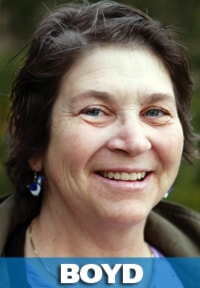Doesn’t all this recent snow, make you think of Christmas?
And Christmas makes me think of the annual Christmas Bird Count. This year it will take place on Sunday, Dec. 18.
It used to be that in order to count the birds you had to shoot them first and then count them.
Needless to say, we don’t do that anymore. In 1900 a fellow named Frank Chapman started up the non-shooting variety of a count. The importance of these counts is to keep track to trends in the bird world.
When we look at the numbers over a number of years we can see that certain species are declining in number or that others are holding their own.
The thing about the Christmas Bird Count is that it is fun! Anyone can do it. You don’t have to be an expert birder.
It’s actually a very simple process. Starting at 9 a.m. you start counting all the birds you see in a specific area. You can either count at a feeder, or do what we call “bush beating” or you could do a combination of both. The only tricky thing about feeder counting is to not count the same bird twice. That’s a bit difficult but not impossible.
What you do is look at your feeder and you see six chickadees so you mark six chickadees down on the tally sheet. The next time you look at the feeder, you see seven chickadees. Instead of adding the seven to the previous six, you would scratch the six out and just put seven because odds are that some, if not all of the chickadees you are now seeing are the same ones as you just saw.
Then, say, the next time you look at the feeder you see only four chickadees, you still wouldn’t add that to your count of seven, unless there was a particular chickadee that you know with absolute certainty that you hadn’t counted before. This could be a chickadee that has perhaps lost his tail feathers and you know that he wasn’t in the two bunches that you saw before. Easy, right?
Bush beaters go to an area and walk around the area counting whatever birds are there. You don’t have to walk.
You could ski, drive, or whatever kind of locomotion you want to use. We’ve had snowmobilers, snowshoers, horseback riders in the past. The tricky part about bush beating is if you find a large flock of something, like Bohemian Waxwings.
When you’ve been doing this for awhile you can just look at the flock and make a rough estimate of, say, 350 birds.
We don’t expect you to count every individual bird. What I will often do is count a certain group of birds and consider that an “eye-full” and then figure out how many eye-fulls there are in the flocks. That will then give me a total estimate for the flock.
Our Central Alberta Christmas Bird Count is a bit different that a lot of the other counts in that we have 27 different circles that people can count in. A circle is 15 km in diameter. People either do part or all of a circle.
We try not to have counters in the same area. That’s why it’s important for me (I have the official title of Christmas Bird Count Compiler) to know if you are counting and where. That way I will know that if someone is already counting at Maskepatoon Park here in Red Deer and someone else calls me and says they want to do that same park, I will either put the two people in touch with each other so they can do the count together or I’ll get one or the other person to choose a different location.
The only other thing that you absolutely have to do if you are participating in the count is to fill out a tally sheet.
You can pick those up at the Nature Centre, print them off from the Red Deer River Naturalist Website (www.rdrn.fanweb.ca and go to Coming Events — the Christmas Bird Count stuff will be there) or you can contact me and I’ll send you the form (call the RDRN office at 403-347-8200 and leave a message or email me at rd.rn@hotmail.com and make sure you put Christmas Bird Count in the subject line).
It’s important to make the tally sheets as complete as possible. You’ll be asked to state things like, what the weather was, how long you were counting for, how far you walked, things like that.
This information helps to clarify things. For example, if you only saw one bald eagle, it would be important to know that you were only counting for five minutes.
A low count could also be explained away by the fact that it was blizzarding.
I will also be leading a walk at the Gaetz Lakes Sanctuary starting at 1 p.m. on that day. I will be joined by the Young Naturalists but anyone can come.
So, let me know if you want to participate. The more the merrier. And if you don’t want to count on your own, let me know that too and I’ll see if I can hook you up with another bird counter. Happy Birding to all!
Judy Boyd is a naturalist with the Red Deer River Naturalists.
